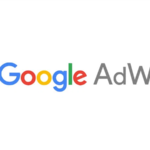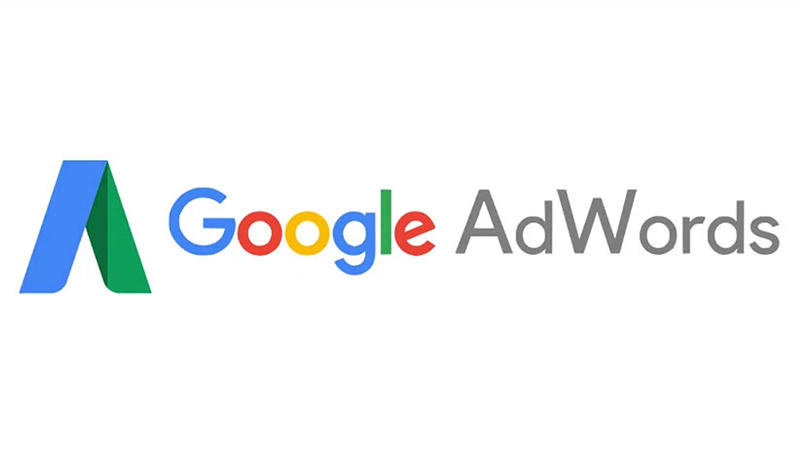
If you’re looking to expand your online business, you’ve likely come across Google Ads. But what exactly are they, and why should you be interested in Google Ads advantages?
This article will provide comprehensive answers to all your queries on this topic.
Google Ads definition: what is Google Ads?
Google Ads, formerly known as Google AdWords, is an advertising platform that allows advertisers to create and display ads on Google’s search engine. You can easily identify whether a search result is an ad by the ‘sponsored’ label on it.
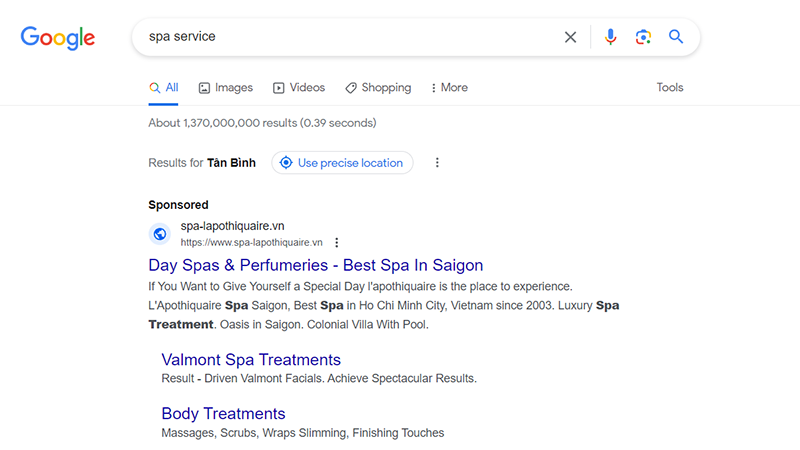
Think of Google Ads as an online tool to boost your brand’s visibility and sell your products or services.
With Google Ads services, you can choose the suitable types of ads for your goals, create your campaign, manage your budget, and make sure you reach your target audience effectively to boost your sales.
Is investing in Google Ads worth it for your business?
For many businesses, Google Ads can be a worthwhile investment, but success requires well-thought-out Google Ads benefits to optimize your campaign.
So, what is the advantage of Google Ads?
1. Achieve quicker results than SEO campaigns
SEO, or Search Engine Optimization, is a critical process to enhance your website’s performance and content, aiming to boost your services to the top of Google’s search rankings. However, this method can be time-consuming, often taking about 3 to 6 months to yield significant results.
SEO also demands a substantial allocation of your human resources, involving tasks like keyword research, competitor analysis, optimizing content, building effective internal and external links, and much more.
That is why SEO can be challenging for companies with limited time and resources. Suppose you’re looking to reach a broad online audience swiftly and need the means to invest heavily in SEO. In that case, there’s another option for you – Google Ads.
Google Ads delivers fast and immediate results, driving increased traffic to your website without the need to compete intensely with larger competitors in your industry. It’s a way to secure a top position in search engine results.
Certainly, to ensure long-term success, it’s crucial to harness the power of both SEO and Google Ads.
SEO services are essential for organic, sustainable growth, while Google Ads can provide immediate visibility and complement your overall digital marketing strategy, enhancing your website and brand presence.
By combining these two approaches, you can achieve a well-rounded online presence that drives consistent results and maximizes your reach.
2. Targeting the Ideal Audience
Reach your target audience by using specific keywords. When someone searches for these keywords, your business appears at the top of Google’s search results.
Keywords in Google Search Ads come in different types. Some are general and match many search terms, while others are super-specific to reach your more precise target.
The cost of the keyword will be affected by the keywords you choose to advertise. That is why any Google Ads user’s primary goal is to discover the keywords that best suit their business goals.
Google Ads makes it easy by providing insights into the search terms that trigger your ads and offers specific performance data for each keyword. You can start with many keywords and then find special ones with little competition or cost as much.
Keywords are essential, but they’re just one part of reaching your target audience. Google Ads also offers additional targeting options like:
– Audiences
– Demographics (Age, Geographic location, Language preferences, etc.)
– Location
– Devices.
Also, If you want to reach people in your nearby area, Local Service Ads will help you achieve the right audience.
Local Ads are helpful for businesses like local shops, restaurants, or services like plumbers that mainly serve one place. When users search the keywords you are advertising near your location, you will appear in the results.
You can also use ads on Google Maps in your campaigns; you can attract customers looking for directions for nearby products and services with minimal effort.
Ensure your services are on top whenever potential customers search for them on Maps.
Discover all you need to understand about Google Maps marketing.
3. Tracking and evaluating your campaign performance
Most businesses expect to see a return on their ad investment. However, beginners might face challenges if their goals aren’t well-aligned with their advertising or if their campaigns have bad optimization.
So, how can you know if your Google ads are effective and improve your ad campaigns? Google Ads has the solution.
Google Ads gives you a lot of details about how your ads are doing:
Tracking ads clicks:
Google Ads provides detailed insights into how many times users click on your ads. You can track which keywords and ads are generating the most clicks, helping you understand the interest your ads generate.
Measuring valuable actions
In Google Ads, you can set up conversion tracking to measure actions that matter to your business, such as online purchases, app downloads, or phone calls that result from your ads.
This information helps you understand how your ads affect your primary business goals.
Identifying successful ads
In Google Ads, you get numbers that show how your ads are doing.
You can look at how often people click on your ads (click-through rates – CTR), how often they do what you want (like buying something), and other signs to see which ads are doing great and which ones need improvement.
Calculating the Return On Investment (ROI)
Google Ads allows you to track both the costs of your advertising campaigns and the revenue generated. By calculating the ROI, you can tell if your google ad is good or not.
Analyzing customer shopping habits
Google Ads provides data on customer behavior, including what products or services they are interested in, which devices they use, and when they are most active online.
This helps you make ads that fit customers’ wants, making your ads work better.
In summary, Google Ads helps you understand which ads are doing great, make changes to improve them, and stop ads that aren’t doing well.
5. Harness user intent
The significant difference between Facebook Ads and Google Ads is the ability to capture user intent.
Facebook and other social platforms are spaces where users prefer to engage with friends, scroll through their newsfeeds, and interact with content they enjoy, such as watching videos.
As a result, some advertisements that interrupt their video-watching or frequently appear in their newsfeed can be seen as annoying, leading users to block such ads or websites.
In contrast, Google Ads targets people actively seeking something specific. For example, if someone is searching for the “best digital marketing services” they show clear intent and are more receptive to relevant advertisements.
6. Flexibility in budgeting
Google Ads is a good choice for businesses on any scale because it offers flexibility in cost and precise control over your campaign budget by selecting keywords and a bidding strategy aligned with your business goals, such as clicks, impressions, or conversions.
The cost of keywords in Google Ads varies and depends on multiple factors affecting the cost per click (CPC).
Think of Google Ads as an online marketplace where you compete for ad placement when people search for things. The more popular a keyword, the more you might have to pay. Your bid is the most you’re willing to spend for someone to click on your ad.
However, it’s not just about money. Google also checks if your ad matches what people are searching for. If it’s a good match, you might pay less.
Also, you can start with broader keywords and look for more specific, less competitive long-tail keywords. This approach allows Google Ads to fit within your budget.
Combining these targeting options with the right keywords can enhance the success and reach of your advertising campaign.
Furthermore, you have the option to bid on Google Ads placement using three primary bidding strategies that align with your goals effectively.
Cost per Click (CPC): This is the most popular choice for businesses. You only pay when someone visits your site. Bidding higher on CPC increases your chances of appearing in search results.
Cost per Impression (CPM): This is about how long your ad is shown on Google’s search results. Businesses that care more about their brand’s visibility than clicks often choose this strategy.
Cost per Action (CPA): You pay for each specific action taken on your site after someone clicks on your ad, like making a purchase, filling out a survey, or signing up for a newsletter.
As you see, Google Ads can help you be flexible for businesses of all shapes in all online ad needs.
6. Easy to manage your campaigns to save time
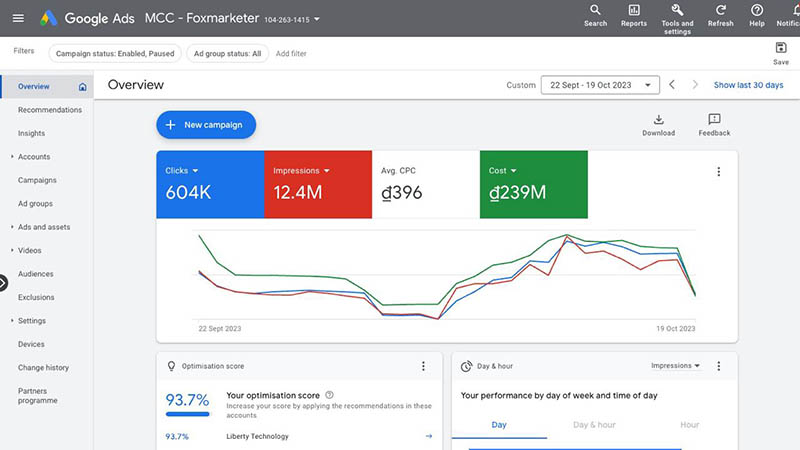
If you handle several Google Ads accounts, a My Client Center (MCC) manager account can be a time-saver. It lets you see and control all your Google Ads accounts in one place. You can do things like:
– Decide how much money to spend and how high to set your bids.
– Easily stop ads when needed.
– Set campaign goals.
– Monitor conversions (like purchases or sign-ups).
– Adjust specific keywords and target groups.
Customize the look of your ads as long as you follow the rules and represent your brand well.
Google also has a user-friendly tool called Google Ads Editor. It’s a free desktop app that lets you work on your Google Ads account even when you’re not online. With Google Ads Editor, you can:
– Download your account info.
– Make changes to your ad campaigns without needing an internet connection.
– Upload your changes when you’re back online.
– Work on and view multiple accounts at once.
– Move or copy things between different ad groups and campaigns.
– Undo or redo changes you’ve made.
7. Increase brand visibility and awareness.
Google is the world’s most popular search engine, and people around the world prefer using it to find what they need. That’s why if you want to boost your brand’s visibility and recognition, Google is the best way to go.
With Search Google Ads, you easily connect with your target customers when they search for things related to your business. If you choose Display Google Ads, your business image will be visible, rapidly building online brand awareness.
By advertising your business on Google Ads, you not only generate profits through sales but also ensure that your brand is constantly in front of the right audience.
When users repeatedly see your business on Google, they’re more likely to remember your brand, a critical factor in enhancing your brand’s reputation, increasing conversions, and growing your customer base.
8. Keep in touch with your customers
Even big brands, with their years of building a reputation, still need advertising. Why, you might ask? Well, advertising, especially on popular platforms like Google, is the best way to maintain a connection with your customers.
In today’s digital age, where new brands continually emerge, it’s absolutely essential to keep in touch with your customers. They tend to forget about your brand if they don’t see you regularly; staying visible is a must.
Thankfully, Google Ads Remarketing can come to the rescue. This strategy entails presenting your brand, including images, banners, or text ads, to individuals on external websites or apps.
By employing effective retargeting campaigns, you can maintain a connection with potential customers, even when they’re not actively searching for your company.
9. Monitor and beat your competitors
Google Ads is a transparent platform that allows you to track your competitors’ actions and their bidding strategies.
By using competitive analysis tools like Google Ads Keyword Planner, Auction Insights, advertising research tools, competitor benchmarking, and monitoring their search ads, you can know about competitor efforts on Google Ads.
For example, if your competitor is using the keywords you are interested in, you can look at the auction insights -tab to analyze your ad performance compared to your competitors.
Here, you’ll find statistics such as:
– Impression Share: Shows how often your ad was displayed.
– Overlap Rate: Measures how often your ad and a competitor’s ad were shown together.
– Position Above Rate: Indicates how often your ad appeared above a competitor’s.
– Top of Page Rate: Reveals how often your ad is displayed at the top of search results.
– Absolute Top of Page Rate: Similar to the above, but at the top position.
– Outranking Share: Highlights how often your ad ranked higher than a specific competitor.
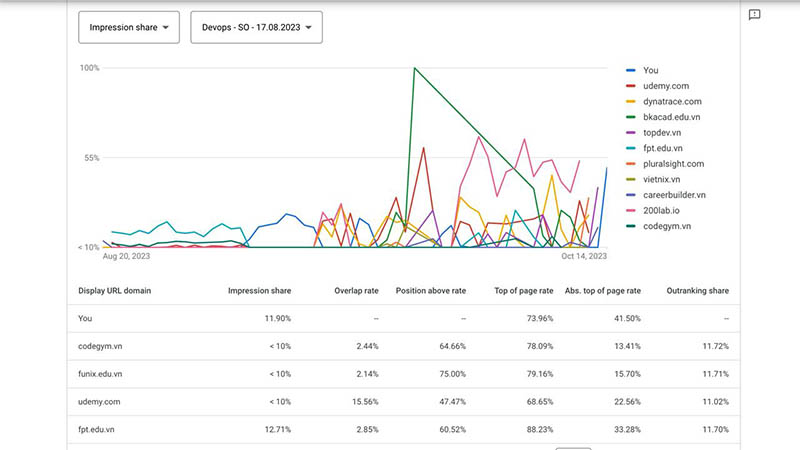
With this information, you can make your ad campaign more effective. You can choose less competitive keywords, increase your bid prices, or change the bidding type to something more suitable, like CPM or CPA bidding, to improve your campaign.
Conclusion
Whether Google Ads is worth it for your business depends on various factors.
It’s a powerful tool that can drive results, but it’s essential to approach it with a clear strategy and a commitment to monitoring and refining your campaigns. When done right, Google Ads can be a valuable asset in your digital marketing arsenal.
FAQ
1. What types of Google Ads?
Google Ads come in five main types:
-Search Ads (Text Ads)
– Google Shopping Ads (Product Ads)
– Video Ads
– Display Ads (Image and Banner Ads)
– App Ads (Through Google AdMob)
To learn more about the differences between these types and how they work, visit our blog titled “Types of Google Ads.”
2. How does Google Ads work?
Google Ads works through a bidding system where advertisers compete for ad placement. When a user enters a search query or visits a website within Google’s network, an auction is held to determine which ads are displayed.
Factors like bid amount, ad quality, and relevance influence the ad’s position. Advertisers pay when a user clicks on their ad (Pay-Per-Click or PPC) or, in the case of display ads, when their ad is displayed a thousand times (Cost-Per-Mille or CPM).
3. How much does Google Ads cost?
The cost of Google Ads isn’t fixed; it varies based on several factors. Your bid amount, ad quality, competition, industry, and targeting all influence costs.It’s crucial to establish a budget you’re comfortable with and regularly optimize your campaigns to manage expenses effectively.
4. How do you set up a Google Ads campaign?
Setting up a Google Ads campaign typically follows these basic steps:
1. Setting up a Google Ads campaign involves the following steps:
2. Sign in to your Google Ads account.
3. Choose your campaign type and objectives.
4. Define your target audience, budget, and bidding strategy.
5. Create ad groups and ad content.
For a detailed guide on running successful Google Ads campaigns, you can read more on our blog titled “How to Run Google Ads.
Remember that successful Google Ads campaigns require ongoing monitoring and optimization to achieve the best results.
